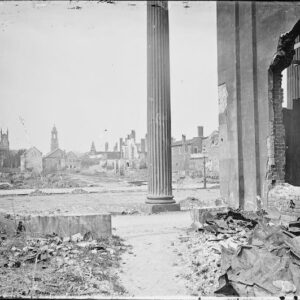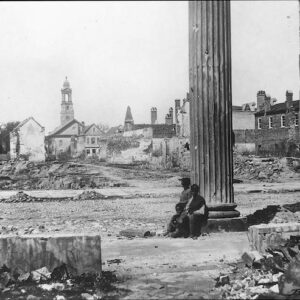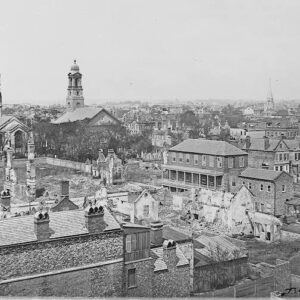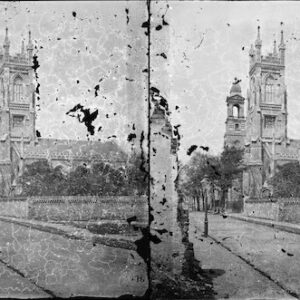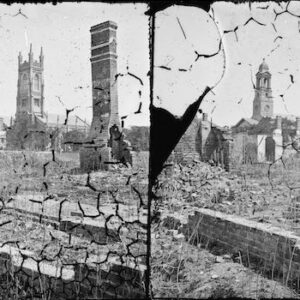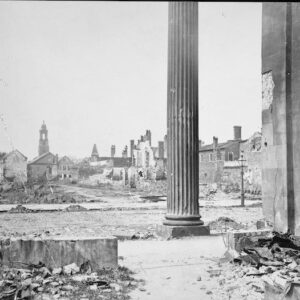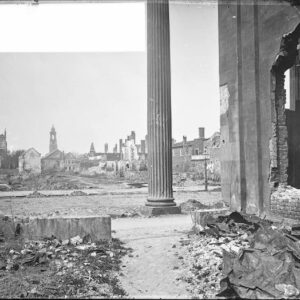Tag: Unitarian Church (Charleston SC)
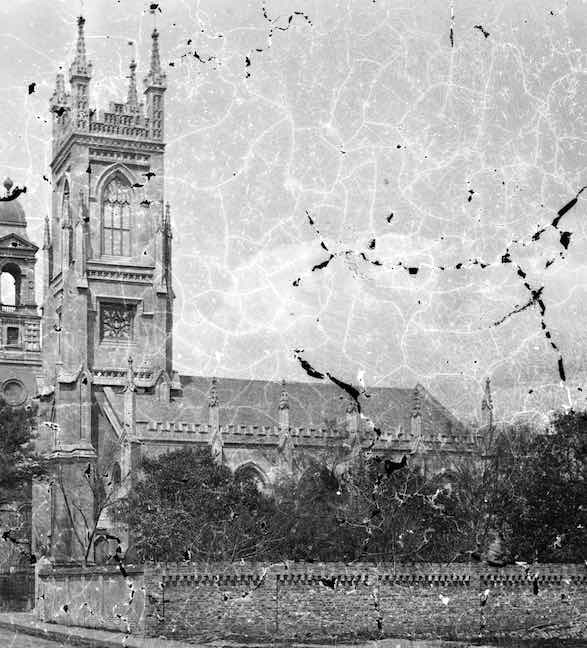 One of the Sister Churches, along with the German Lutheran Church, on Archdale Street.
One of the Sister Churches, along with the German Lutheran Church, on Archdale Street.
Wikipedia says: The Unitarian Church in Charleston, home to a Unitarian Universalist congregation, is an historic church located at 4 Archdale Street in Charleston, South Carolina. It is the oldest Unitarian church in the South and the second oldest church building on the peninsula of Charleston.
The church has received Welcoming Congregation status from the Unitarian Universalist Association as well as Green Sanctuary certification. It is known in Charleston for its social justice activities.
Early history and conversion to Unitarianism
The Unitarian Church in Charleston was originally built as a second meeting house for the Independent Church in Charleston, also known as the Society of Dissenters, because the congregation needed more space than its Meeting Street location could provide. This second building was to be Georgian in style, plain brick with two doors and a tower in front. Construction began in 1772 and was nearly completed in 1776 when the Revolutionary War began. Because both Colonial and British forces quartered militia in the building, it needed considerable repair after the war. Unofficially named the Archdale Street Meeting House, it was finally dedicated in 1787.
For 30 years following the dedication, the Meeting Street and Archdale Street churches operated as a single entity. They shared not only the same two ministers, but the same sermon was delivered each Sunday. Drs. Hollinshead and Keith, co-pastors of the church for most of this period, each preached one sermon in both houses each Sunday, alternating morning and afternoon services. In 1815, one of the co-pastors was the Reverend Anthony Forster. Forster was married to Altona Gales, the daughter of Joseph Gales, a North Carolina printer and a close associate of Joseph Priestley. Gales and Priestley were friends in England, and both fled England to escape religious persecution in 1795-1796. Dr. Joseph Priestley was the eminent British Scientist who discovered oxygen and carbonated water. Priestly was also a Unitarian Minister, and a dissenter. When Anthony Forster converted from the trinitarian to unitarian theology in 1817, the congregation split, with 75 members out of 144 leaving the mother church to form an independent church based in the Archdale Meeting House. (The original Independent Church on Meeting Street is now the site of the Circular Congregational Church.) The new congregation was chartered as the Second Independent Church of Charleston in 1817.
As Forster succumbed to an old Army illness in 1819, Samuel Gilman, a graduate of Harvard College and an “avowed Unitarian”, was hired to complete the slow transition to Unitarianism. While at Harvard, Gilman wrote Harvard’s alma mater, Fair Harvard. Gilman’s wife, Caroline Howard Gilman, was a well-known author and poet. She was inspired by Mount Auburn Cemetery in Massachusetts, to create the churchyard next to the church in the 1830s with beautiful plants and objects; a place to be used by the living. Samuel Gillman remained the minister of the church until his death in 1858. During his tenure, he was known as a fine speaker and grew the congregation substantially. Ralph Waldo Emerson also spoke at the church on two different occasions in 1823. The church was chartered as the Unitarian Church in Charleston when it joined the American Unitarian Association in 1839.
Renovation in the English Perpendicular Gothic Revival style
Francis D. Lee, a Charleston architect and church member, was hired in 1852 to enlarge and remodel the building. Inspired by architecture such as is seen in the Chapel of Henry VII at Westminster Abbey and St George’s Chapel at Windsor Castle, Lee completed the project two years later in partnership with Edward C, Jones, a local architect with more experience then Lee. Lee was only 26 years old at the time with only one statue on his resume, Jones was 28 years old but had been in construction since he was 15 years of age. The project involved raising the entire roof of the building four feet, adding a Chancel, and constructing false flying buttresses to provide the proportions and looks of a Gothic building. In addition, the tower was raised and was built to include an office for the minister. The fan-vaulted ceiling, nave, and chancel closely resembled their English prototypes; the stained glass windows were considered among the finest in the country. The church may have been the first building of Gothic architecture built in the United States. The style is referred to as English Perpendicular Gothic Revival.
The large Chancel window was manufactured by the Henry E. Sharp glass works of Brooklyn, New York in 1854. The two side windows in the Chancel are also by the same glass works and are mostly painted and etched glass. The main window, created from painted glass, depicts both the old and new testaments, with Moses and Aaron flanking the Ark of the Covenant in the lower portion and the four Gospel writers arranged above them.
The Interior of the building was furnished with pews, pulpit, lectern, and communion rail, all carved from or capped with walnut. Gas lighting was also installed at this time. In recent times, a hand rail created by Philip Simons was added.
Civil War and natural disasters
During the Civil War, many members left Charleston and the church closed its doors until 1865. Shortly after the war began, the Great Charleston Fire of 1861 swept across the peninsula, destroying five churches and coming within two blocks of the Unitarian Church. During the 18-month Federal bombardment of Charleston that began in August 1863, the church was within range of the Union batteries but again remained unscathed.
Charleston surrendered to Union troops on February 15, 1865, and the church began, once again, to hold services. Because many members had lost their fortunes and/or did not return to Charleston, pew rentals plummeted and the church fell on difficult times, going through seven ministers in the next ten years. Fortunately for the church, one of its members, Alva Gage, had retained most of his money and was generous in sustaining the church through the difficult times.
Meanwhile, the Universalist Church in Charleston closed and was sold in the late 1850’s with the money invested. After the war the remaining members joined the Unitarian Church and donated their funds to the repair of the church. It was not until 1961 that Unitarians and Universalists officially merged into the Unitarian Universalist Association, but clearly there was an affinity much earlier than that!
